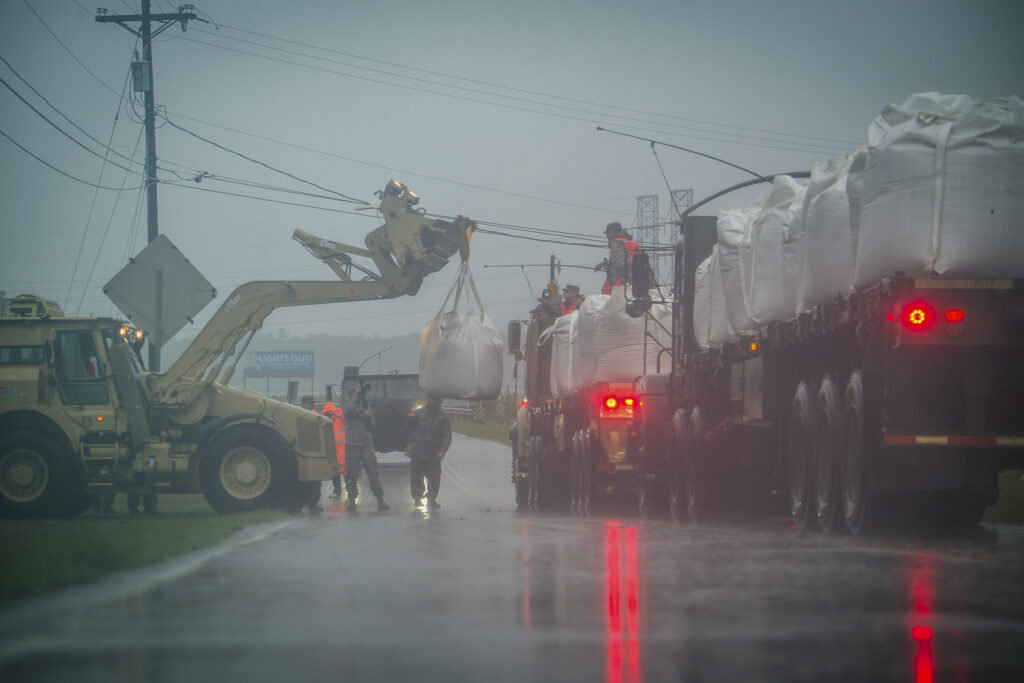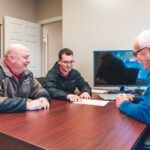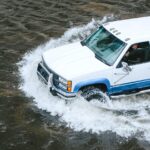The single deadliest driving hazard is also the most common.
Rain is by far the deadliest driving hazard – Wet pavement has been attributed to 76% of weather-related fatalities over 2007 – 2016. Rain driving and wet conditions beat out ice and snow by a wide margin, even in areas that see more snow than rain – and yet most drivers don’t think twice before hitting the road during a rainstorm.
The best advice to driving in rain? Don’t.
…But hurricane season is just a part of life in North Carolina. So if you must drive in the rain, how do you avoid endangering your wallet, your vehicle, and your life?
Here are some of the tips to keep in mind while navigating North Carolina’s hurricane season. Stay safe folks!
Avoid standing water.
- Standing water is often deceptively deep. “According to FEMA: Just six inches of water will reach the bottom of most passenger cars, causing potential stalling. Twelve inches of water will float many vehicles, and two feet of rushing water will carry away most vehicles.”
- Avoiding standing water significantly decreases your chance of hydroplaning.
- Driving through puddles at speed can also splash water onto the windows of other vehicles, impairing their visibility.
How to avoid hydroplaning:
- Keep your tires properly inflated and maintained. Tires are made to dispel water from your path, but underinflated or worn tires lose their ability to contact the road sufficiently.
- Drive slower. Experts agree that hydroplaning is most likely to occur at speeds greater than thirty-five miles per hour.
- If you do hydroplane, don’t slam on the brakes or jerk the wheel. Take your foot off the accelerator and smoothly steer towards an unoccupied space on the road. Eventually your car will regain traction.
Avoid sudden turns and braking.
- In addition to impairing your visibility, wet conditions reduce your car’s ability to turn and brake. Increase following distance, reduce your speed, and avoid unnecessarily jerking the wheel.
Wait to drive.
- It’s most dangerous to drive immediately after it rains. The water pulls oil from the asphalt and makes the road more slick than when it’s been raining for a while. Wait 30 minutes for residual oil to wash off the roadway. (Or, even better, wait for the storm to pass.)

Keep your car in working order.
- Crucial to driving in dry conditions, your car’s lights, signals, and tires become life or death in rainy conditions. Check tire traction, headlights, tail lights, and blinkers to avoid any potentially fatal malfunctions.
Stick to the middle lanes, and drive in the tracks of the driver ahead of you.
- Side lanes usually attract more standing water (which increases the chance of hydroplaning.)
- Tires are built to dispel water from your path. By driving in the tracks of the driver ahead of you, you’re taking advantage of their tires already having pushed water out of the way, and giving your tires the best chance to contact the road surface.
Give other drivers more space
- Remember, every driver is struggling under the same dangerous conditions. Give other cars extra time to brake, turn, and react to your signals.

It bears repeating:
The safest strategy to deal with rain is to avoid driving in it at all.
But with mindfulness, practice, and preventative measures, you can greatly increase your chances of getting home safe.








